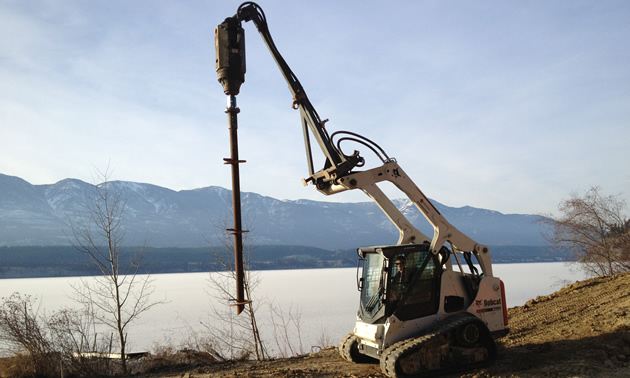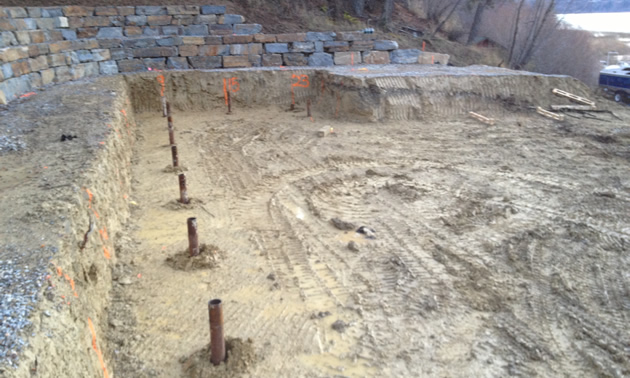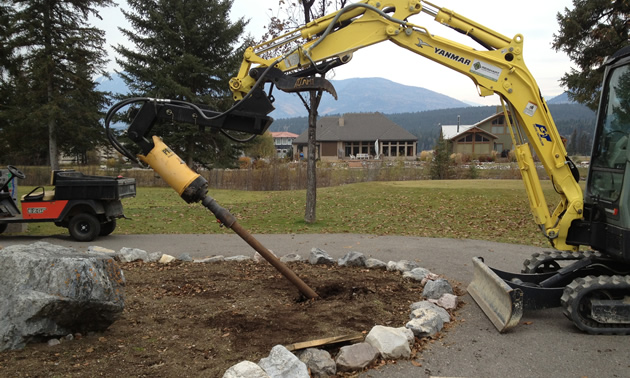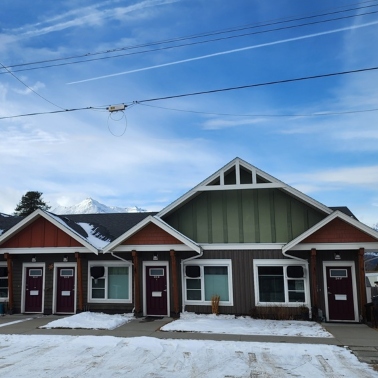Local builder introduces old technology
Larry Reinhart is bringing helical piles into the building industry in southeastern British Columbia
Helical piles—also known as screw piles—are the next big thing for Larry Reinhart of Reinhart Construction in Invermere, B.C. He’s so excited by his research and experience with helical piles, having installed about 1,000 of them at various building sites, that he has already purchased the trucks and equipment he needs to get this aspect of his business on the move.
A helical pile is a steel tube with one or more helical plates welded onto it. It was invented in the 1830s by Alexander Mitchell, a blind Irish engineer, and has been used with great success in the construction of lighthouses, breakwaters and bridges around the world. High-torque motors are used to sink the piles to the needed depth, and lengths of tube can be added as needed to achieve that depth. The piles can be installed through unstable or frozen soil, they can be installed in small spaces, and they are ideal for use in projects where traditional building supports have failed.
“Screw piling is not new technology but it’s underutilized in the building industry,” Reinhart said. “It enables the builder to build on a difficult site. You can put in a deep foundation relatively easily and know it won’t fail.”
Time-efficient and environmentally responsible
“You don’t have to look very far to find sonotubes failing,” Reinhart said. “Screw piles don’t fail. They can be installed in any season, they are fast to install and can bear a load immediately after installation.”
Doug Clapp of GroundTech Engineering Ltd. in Fernie, B.C., spoke about the benefits of using helical piles in B.C.'s Columbia Valley.
“As development progresses in the Columbia Valley, it’s pushing into more and more challenging terrain," said Clapp. "That means going into areas of poor soil condition where traditional concrete foundations won’t function properly and won’t be able to support a structure. Helical piles give you a means to support building loads on a deeper, more stable strata and not rely on near-surface soils that are of poor bearing capacity or have consolidation settlement issues.”
Reinhart explained the measures he takes to ensure that the helical piles provide appropriate structural support.
“We monitor hydraulic pressure and foot-pound torque during installation with a digital data logger,” said Reinhart, “and the ultimate capacity for a compressive, or tension, load is verified by a professional engineer.”
Applications everywhere
Because they withstand both compression and pull-out stress, helical piles are often used for anchors or for guy wires for pipelines, mooring and boat ground tackle. Reinhart said that screw piles are widely used in Alberta’s oilpatch to support temporary work camps. When the project is finished, the screw piles can be removed and reused, and there’s not much site reclamation to be done afterward—unlike sites that use concrete supports.
“The cost of putting in a deep foundation is sometimes a big deterrent to building on weak soil,” Reinhart said, “but not anymore—not with screw piles. We have installed the screw piles for a 5,000-square-foot house in 2½ days on an old bog. (The owners) still built a conventional basement on top of the piles, but they know that it’s not going to shift.”










Comments